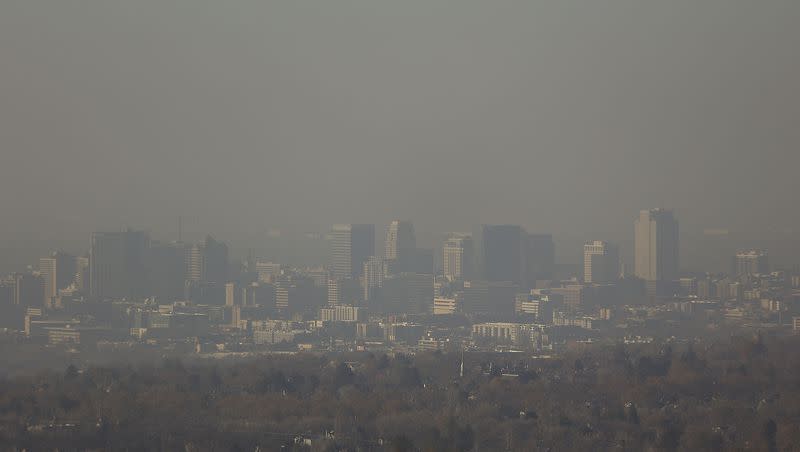Opinion: 70% of Utah schools have air purifiers. What about the 30% that don’t?

For the last 15 months, Utah Physicians for a Healthy Environment has been collaborating with the Utah Department of Health and Human Services to place air purifiers in every K–12 school classroom and early-ed/preschool centers in the state. The good news is about 70% of Utah schools are now participating in the program. The bad news is 30% are not. The federal grant that funded the program expires at the end of July and that means time is running out for about 240,000 Utah children to be included, and for them a tremendous opportunity could be missed.
The original objective of the grant funding was to reduce viral transmission and open up schools as safely as possible during the pandemic. While numerous early strategies were eventually retired as the pandemic evolved, the value of air purifiers has endured because they are proficient at capturing viruses in the air, as well as the pollution particles, respiratory droplets and aerosols that they are often carried by. That means less transmission of COVID-19, influenza, RSV and common colds among students, faculty and their families, less absenteeism, and less disease spread throughout the community.
For several years, Utah Physicians for a Healthy Environment has been citing mounting research that shows there is no safe level of air pollution, and more specifically new research that shows air pollution is harmful to the brain just as it is to the lungs, heart and blood vessels. Five years ago, this medical research had become so well established that the physicians group began asking Utah lawmakers to fund air purifiers for Utah schools because they were shown to significantly improve academic performance of students. When the pandemic arrived, that added another dimension to the benefits of classroom air purifiers.
Now a new study has put an exclamation point on the importance of the cleanest air possible for Utah students. Examining brain scans of over 9,000 adolescents, some in Utah, and quantitatively correlating the findings with the different kinds of air pollution they were exposed to — particulate matter (PM2.5), ozone, and nitrogen dioxide (NO2) — researchers found all three types of pollution were associated with changes in connectivity between various brain regions. In some regions the connectivity was increased, in others decreased, but any deviation from normal in either direction is likely to represent irreversible damage to brain development. Even more alarming is that these changes were also found in those adolescents that were exposed only to air pollution levels the EPA declares “safe” even for “sensitive groups.” Communication between different regions of the brain is critical to everyday brain function; to cognition, memory, executive functioning and normal emotional development, especially for children and adolescents as their brains are not fully developed.
This study adds another dimension to hundreds of other studies that have established, 1) Air pollution particles penetrate, contaminate and inflame brain tissue, 2) They cause developmental and accelerated aging changes in brain anatomy, especially microanatomy, and 3) Pollution is associated with clinically impaired brain function.
The implications for federal and state government, and for family decision-making, are profound. The EPA’s proposal to tighten PM2.5 and ozone standards doesn’t go far enough, and they haven’t updated the NO2 standard since 1971. They should ignore the recent request by 19 Republican states’ attorneys general, including Utah’s Sean Reyes, to dismiss the science and leave the weak standards untouched.
For Utah’s legislators, now is the time to prevent the Great Salt Lake from becoming a dust bowl, it’s time to stop steering our economy toward polluting projects like gigantic warehouse farms, the inland port and subsidizing the extraction and dirty energy industries. Reducing air pollution should be front and center in strategies to improve Utah’s public education and maximizing the academic and career opportunities for our children.
Parents, protecting your child’s brain development should be a top priority. It’s time to trade in your gas stove for something electric, and if your child attends a school that has not yet signed up for free air purifiers, find out why. Air purifiers are a no-brainer. It is urgent that you call your schools’ administrators and tell them your child deserves the benefit of air purifiers. To look up the status of your child’s school, go to our website, https://www.uphe.org/free-air-purifiers-for-utah-schools/ or email brandi@uphe.org.
Dr. Brian Moench is the president of Utah Physicians for a Healthy Environment.

